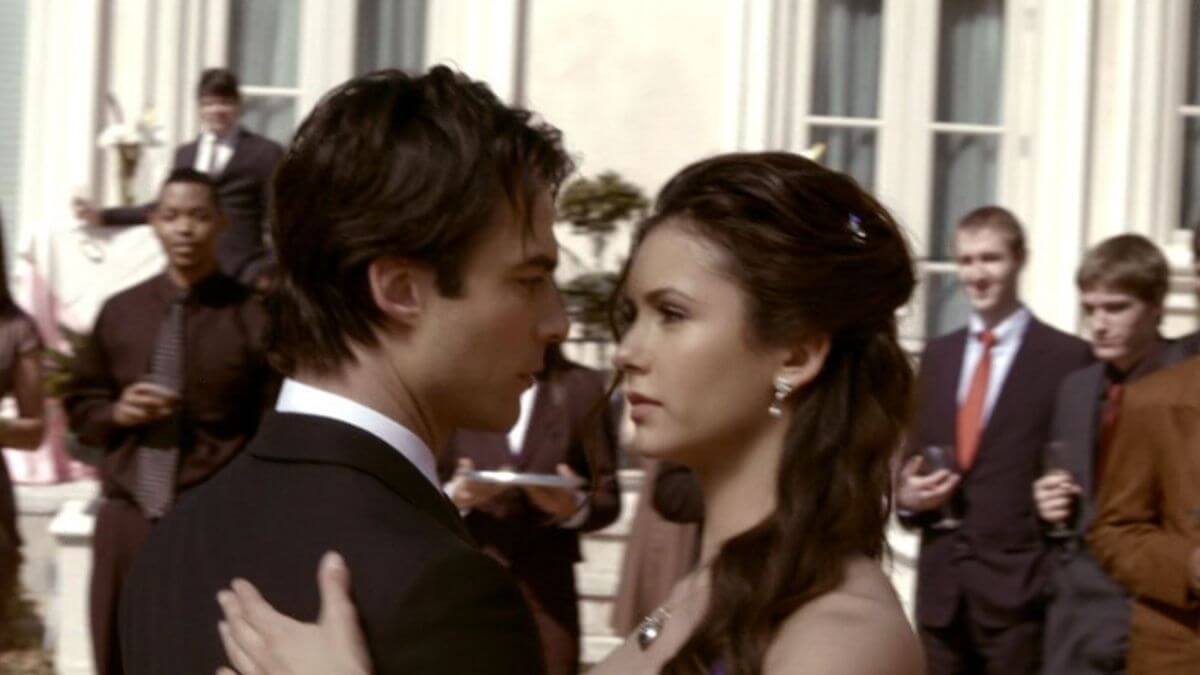Vampires, as evidenced by Lord Ruthven, have always had an erotic magnetism.

What is a monster? Consider the handsome Lord Ruthven of The Vampyre. Seductive and wholly evil, he mercilessly kills women, leaving one with “blood…upon her throat” (Polidori 39). He’s a vampire, a creature that drains the blood of his female victims dry. Appealing and alluring on the surface, he hides his true nature, a monster that lurks in the night.
RELATED The Best 30 Romantic Vampire TV Shows, Ranked by Romance
The Classic Horror Monster
Vampires, as evidenced by Lord Ruthven, have always had an erotic magnetism. Back then, however, monsters were still just monsters. Vampires, while sexually tempting to the female characters (i.e. Aubrey’s sister who Lord Ruthven seduces, marries, and then murders), were still evil and not worth saving.
When Dracula boasts, ‘“Your girls that you all love are mine already…to be my jackals when I want to feed,”’ we cannot identify with him because his monstrosity has no redeeming qualities (Stoker 312).
The Byronic Hero
However, Charlotte and Emily Bronte also introduced another type of monster in the 19th century. Heavily influenced by the Byronic Hero of the Lord Byron’s persuasion, the two sisters created a new subtype of the Byronic archetype: the romantic Byronic Hero struggling with the monster within.
This internalized form of monster can be found in characters like Mr. Rochester of Jane Eyre and Heathcliff of Wuthering Heights. Both characters struggle with inner demons while looking for redemption in the love of a woman.
Blend the Classic Monster With the Byronic Hero and VOILA…You Have The Byronic Monster
The vampire, amongst other literary monsters, eventually evolved into a new monster frequently seen in the present day. This new monster combines the old horror monster and the Byronic Hero struggling with the monster within to create a romantic figure that now has redeeming qualities ultimately.
Today, vampire stories featuring this relatively new amalgamation appeal heavily to a large audience (particularly women like myself).
The monster, as seen from the vampires in paranormal romance fiction and vampire television shows like The Vampire Diaries, Being Human, Moonlight, Blood Ties, True Blood, and Buffy the Vampire Slayer, can now possess redemptive qualities alongside their already existing monstrous traits.
They can be both monsters and a romantic Byronic Hero, “a boldly defiant but bitterly self-tormenting outcast, proudly contemptuous of social norms but suffering for some unnamed sin” (“Byronic”). While not innocent, the new vampire is a monster we can root for. The new vampire can become a monster we love.
Why Do We Love the Byronic Monster?
So, my question for all the vampire lovers is what makes these romantic monsters attractive?
RELATED: Read about our Top 20 Byronic Heroes in Film
From my viewpoint, the new monster is a brooding bad boy. Who can withstand the bad boy who finds redemption in the woman they love? It’s the vampire’s allure as a Byronic Hero. It’s about the focus. And it’s about the moodiness, the selfishness, the arrogance, the lack of following rules, the temptation, and the obsession.
One particular trait that stands out when considering Heathcliff and Mr. Rochester’s characteristics is passion. Their passion for Jane and Cathy always brings me back to two of the best novels of all time. It’s the same reason I will always be drawn into the world of vampires and romantic monsters.
And to leave with the perfect example of the old versus new vampire, check out this fabulous promo of Moonlight done by the CBS Eyelab:
Moonlight Promo: Vampires Creepy Vs. Sexy
Do you have a favorite vampire in fiction, film, or television?
Sources:
“Byronic.” The Oxford Dictionary of Literary Terms. Oxford Reference Online, 2008. Web.
Polidori, John William. The Vampyre: A Tale. Public Domain Books, 2004. Kindle Edition.
Stoker, Bram. Dracula. New York: Signet, 1992. Print.

I really liked this article. I’ve never been a big fan of vampires so it helped explain the allure of modern day vampires and romantic attraction.
Thank you. Hopefully, this article helps people like you understand the appeal more.
I do like a good dose of broodiness but I must say I love a vampire who accepts and embraces who he is too. Damon, certainly, from TVD embodies this but my very favorite interpretation of this has to be Henry Fitzroy.
Henry didn’t spend a lot of time dwelling on what might have been and it made him even more sexy to me than someone who fights against their nature. Although I like that too! LOL
Great article!
I LOVE Henry Fitzroy and I love the ones who embrace their nature as well. We have this theory (influenced from Stein) that Byronic Heroes should actually be separated into three types. Henry would be a type one (the type more likely to embrace their nature), type two… (the brooders) and Type 3 a combination of both. Anyway, thank you!